Pros and cons of an invisible kitchen
Hidden kitchens in the interior have 5 undeniable advantages:
- Space saving. You don’t need to allocate a separate room for cooking — a corner in a spacious hall is enough.
- Aesthetic appearance. Invisible kitchens when closed look like a regular built-in closet or wall, allowing you to preserve the beauty of the living room.
- Non-standard design. Sometimes in modern apartments you simply can’t do without such solutions.
- Ergonomics. Thanks to the compact size, everything is at hand: the storage area, countertop, hob, refrigerator, sink are located close to each other.
- Versatility. A hidden kitchen can be designed in any style: from minimalism, high-tech, to restrained classics or even gothic.

The photo shows a white kitchen set behind white doors
The disadvantages include the high cost – the price tag for an invisible kitchen is higher than for a built-in one, since the cost of the masking system is added to the furniture itself.
The second disadvantage is relative inconvenience. If the area is completely closed (for example, with an accordion door), then to drink water or take an apple, you will have to slide the system apart and back in every time. At some point, you will become too lazy to do this, so there is a high probability that the invisible kitchen will turn into a regular set with a permanently open screen.
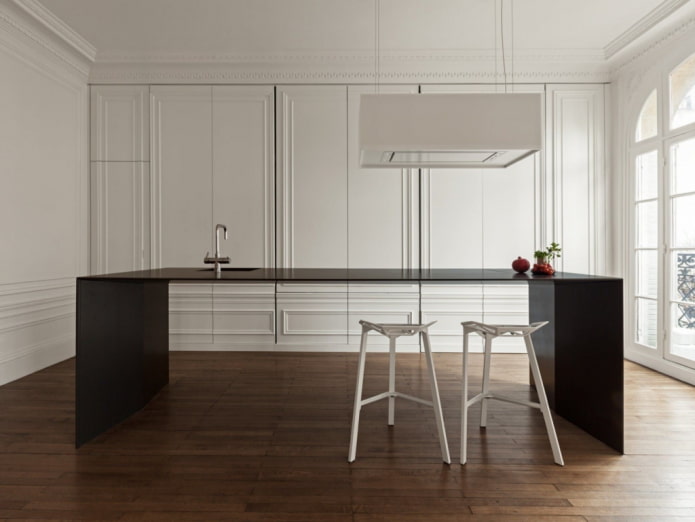
In what cases is this the best solution?
A hidden kitchen is not a necessity, but is recommended in combined spaces. Especially when the living area is used not only for evening family recreation, but also as a study, showroom, or a place to receive guests.
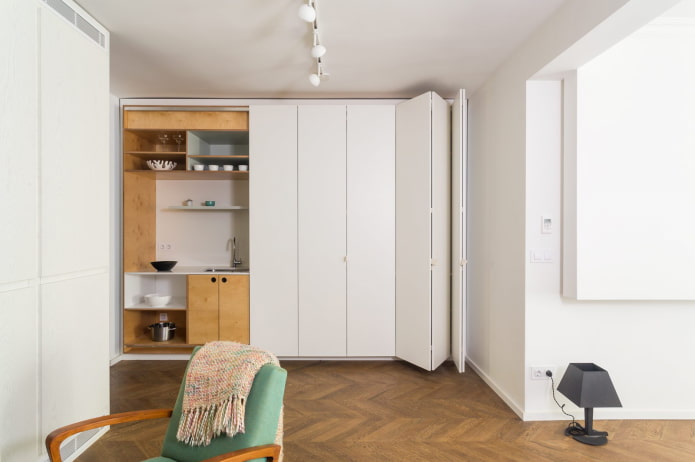
The photo shows an invisible kitchen in a studio
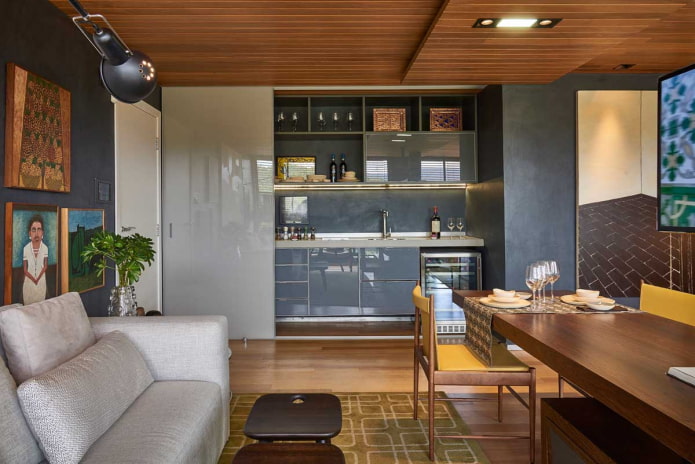
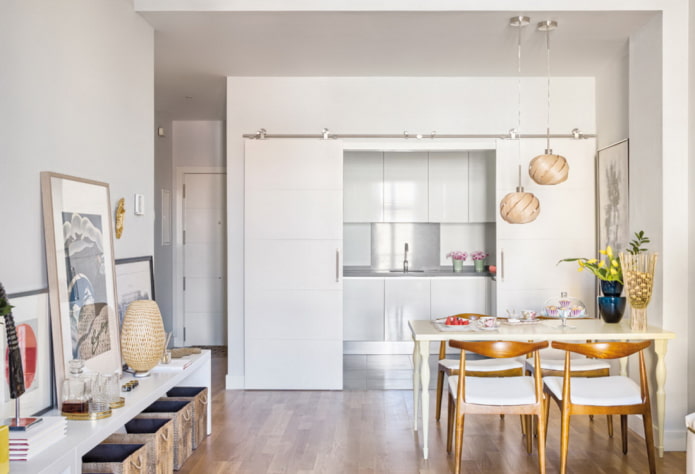
In small studios, where only one room serves as a living room, bedroom, kitchen, invisible installation will be an ideal option. A closed work surface will avoid the feeling of a large dining room, making the space more cozy and homey.
A similar design solution is often used in apartments for daily rent. When the kitchen is only needed in certain cases and is not of particular importance.
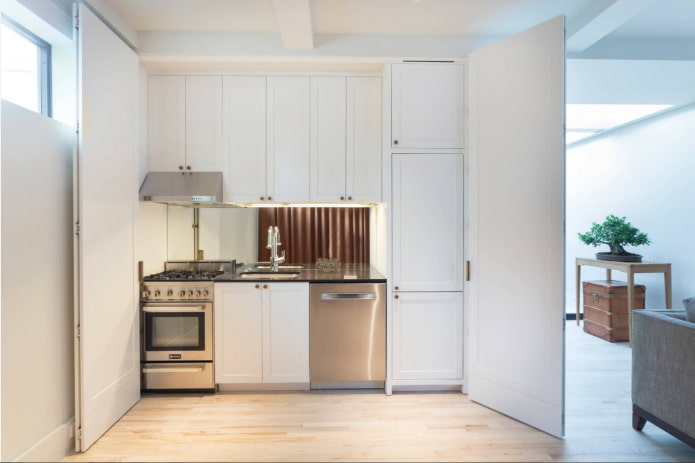
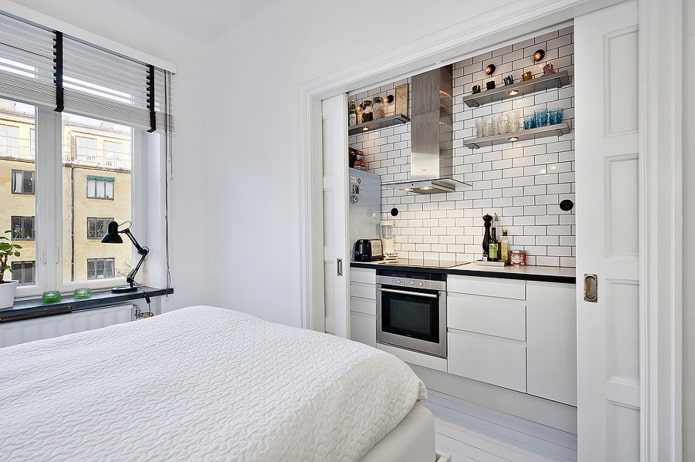
What types are there?
There are not many options for how to hide the kitchen, let’s consider 4 main ones.
Kitchen in a niche behind sliding doors
Most open-plan projects use this method of creating an invisible cooking area. Guides are installed at the top and bottom in front of the drawers, along which the doors will move.
Door design – slider or accordion. Where the open partitions will be located should be taken into account at the design stage.
To make the work area absolutely invisible, the doors can be combined with the walls by color (white with white), material (wood with wood).
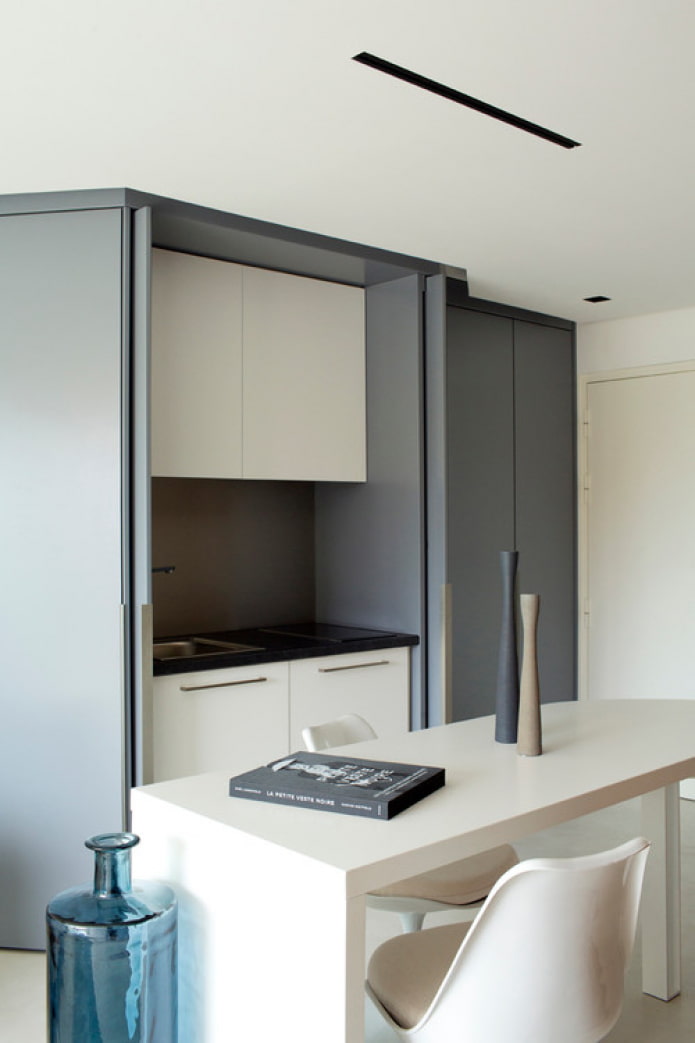
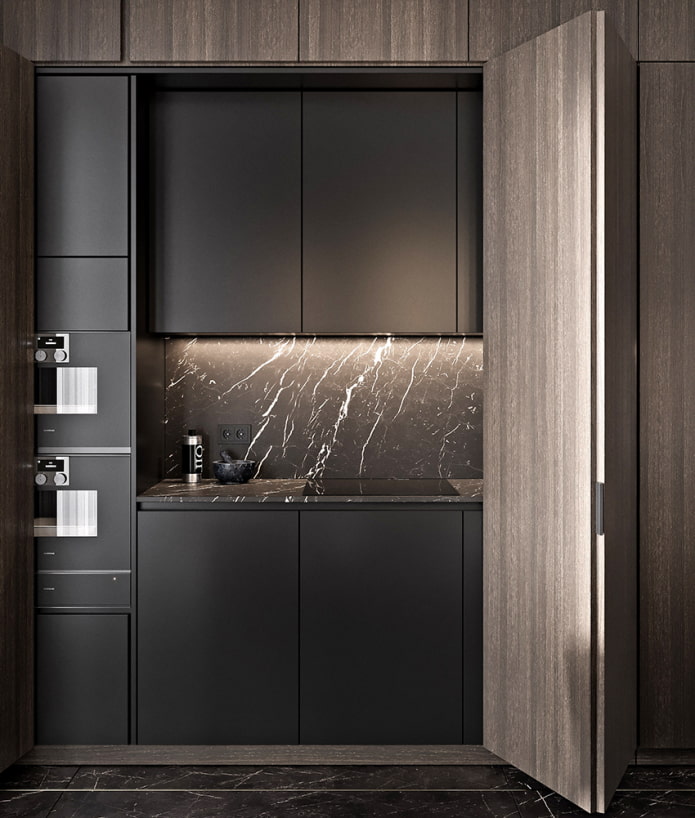

The photo shows a system of sliding doors
Monoblock kitchen
A functional option for decorating a small studio is a monoblock. It is also called a bachelor’s or student’s kitchen, because just a few cabinets contain all the necessary cooking utensils. Tableware, appliances, utensils, food.
Manufacturers build standard appliances into the block furniture set or assemble custom-made furniture: the buyer independently selects the necessary equipment, manufacturer, and dimensions.
From the outside, the monoblock looks like a small cabinet, which, after opening, turns into a compact kitchen, where it is convenient to cook a simple dish, make cuts, boil a kettle.
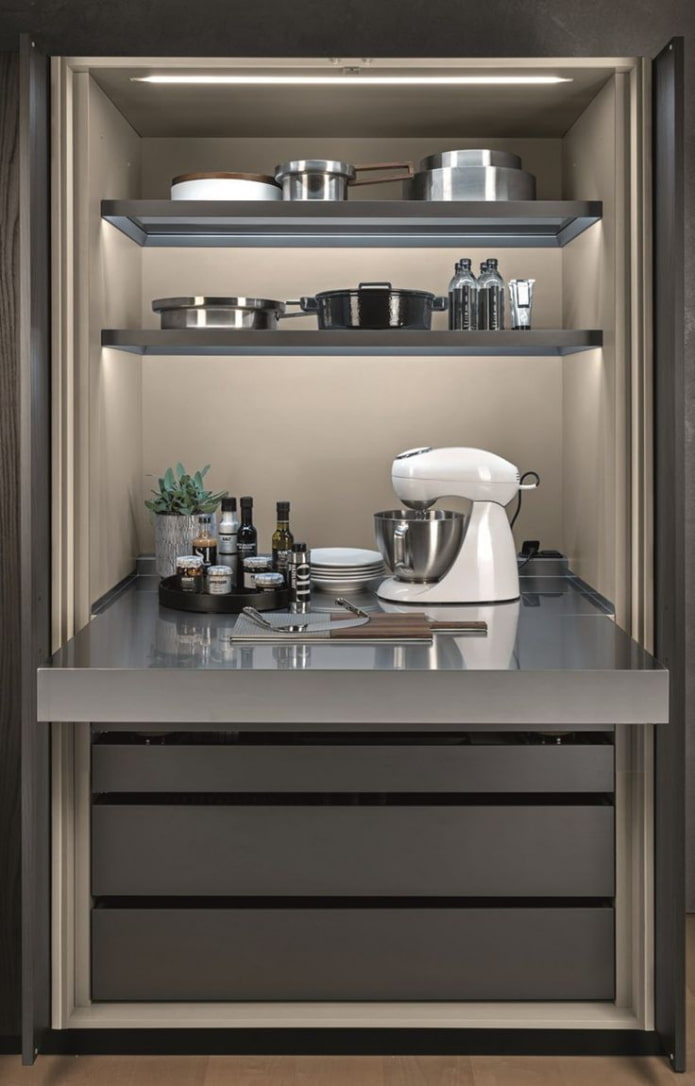
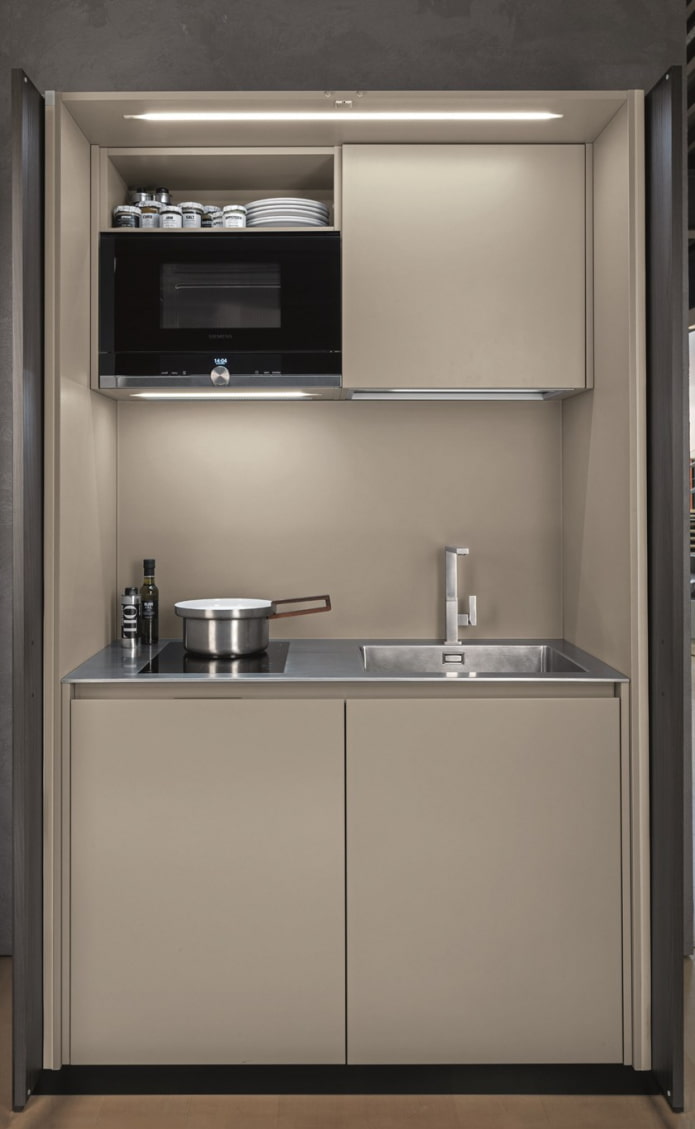
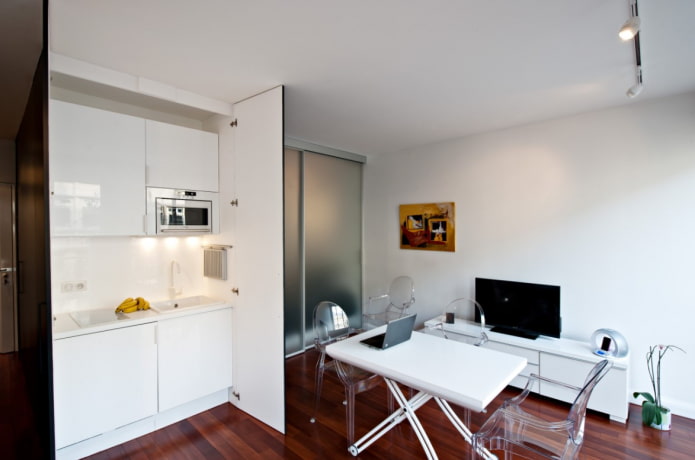
The photo shows a monoblock in a niche
Kitchens with sliding/pull-out units
The “chameleon” system is not a typical example of a hidden kitchen, but it allows you to hide the most unsightly parts of it at the right time. For example, with the help of a pull-out countertop, the hob located on the island is hidden.
The second option can be seen in the photo: the special design of the dining table allows you to disguise it as a cabinet when assembled.
We cannot fail to mention models with closing countertops: if the surface is wide, the facades hide only its back part. The closed area stores utensils, dishes, and unsightly small appliances. A kettle, stove, and sink can remain in front.
The standard 60 cm wide countertop is completely hidden. To do this, facades are made on the outer part at the height of the apron, equipped with special fittings that allow the doors to open flatly upward. When the fronts are closed, they create the impression of a blank wall – the effect is similar to a kitchen with sliding doors, but the implementation requires less money and free space.
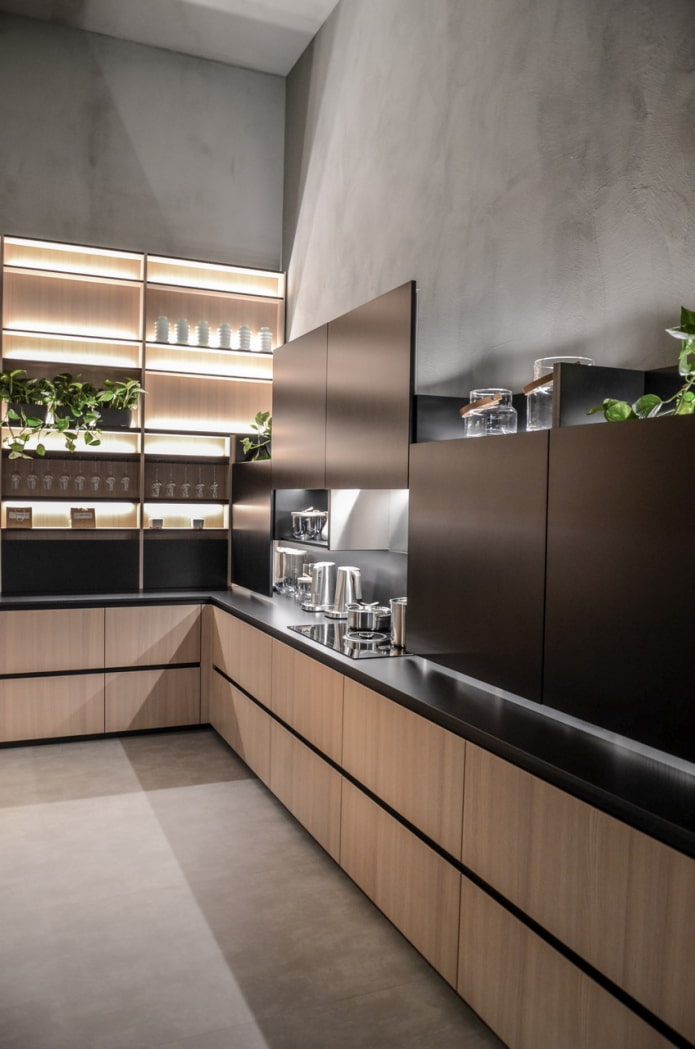
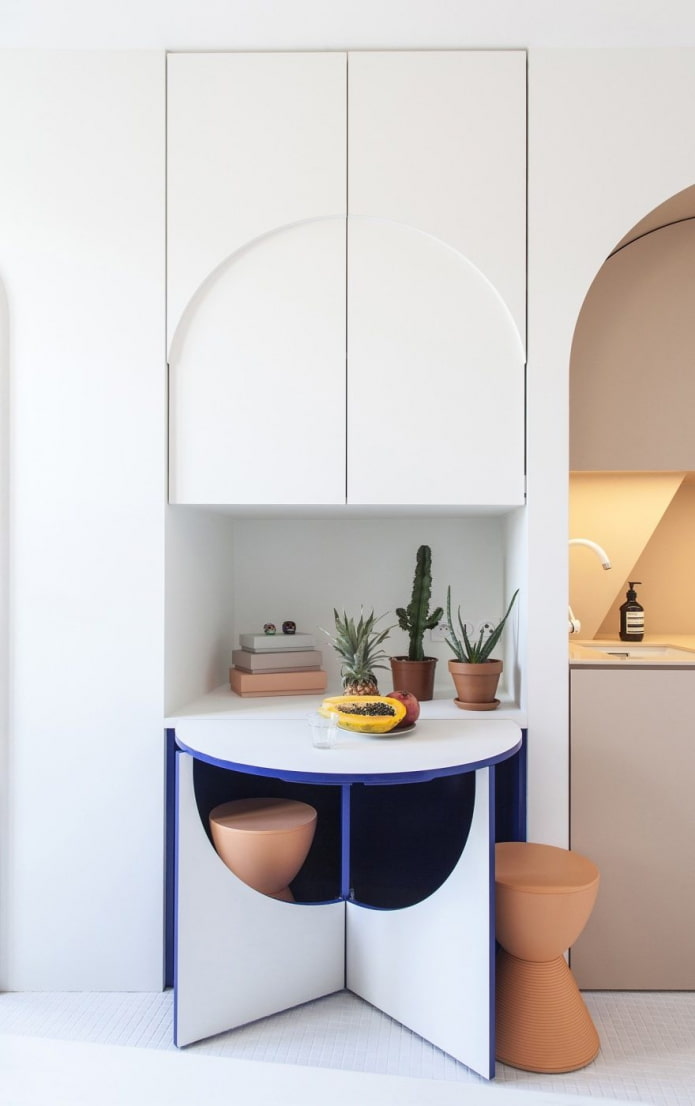
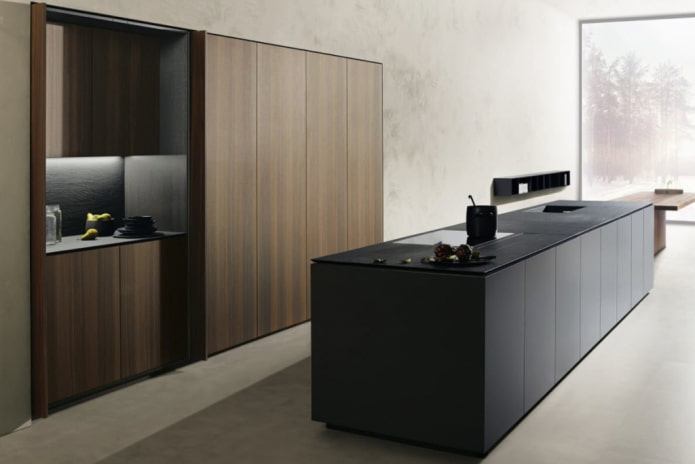
Partial integration
In families where people love to cook, do it often and a lot, hiding the kitchen completely means introducing inconvenience into their usual life. To prevent this from happening, a partially hidden kitchen is made in the living room: the kitchen set and furniture in the living area are made in the same style, color, and material.
The overall appearance of the combined room is uniform and the work area is no longer conspicuous.
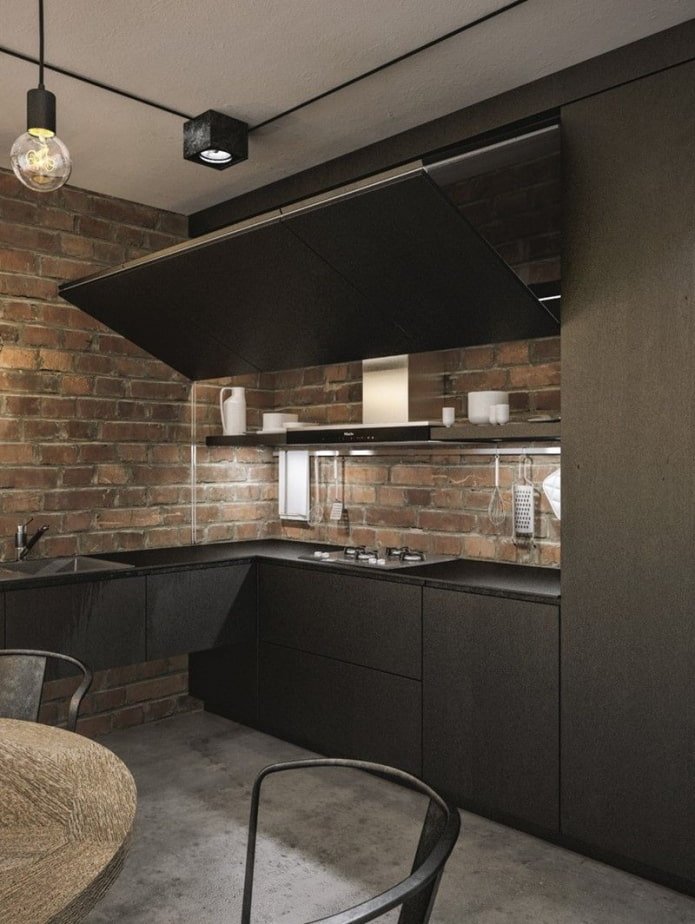


Examples in the interior
In the first photo you can see in detail the designer set up to the ceiling in a classic style. Behind the facades with moldings in the central part is hidden a functional area with a sink, stove, hood. In the column on the left there is an oven, a microwave, on the right — a refrigerator.
The main task set by the customers was to create a pleasant place for communication, where nothing would distract attention from friends and family members.

The photo shows an invisible kitchen in a classic style


Photo #3: ergonomic placement of the furniture in the living room. The kitchen took up the free space between the doors, while the refrigerator was moved to a niche on the right – the rest of the room is given over to the living area. The furniture is equipped with a mechanism for sliding doors, hidden in side bases.
The fourth example is no less interesting: in a loft-style house with high ceilings, they hid not just furniture, but an entire room. Behind the wooden folding accordion doors there is a refrigerator, sink, stove, hood, shelves with dishes, two trash containers.
To ensure that there is not a single hint of a kitchen left in the room, just close the mechanism by pulling the handles.
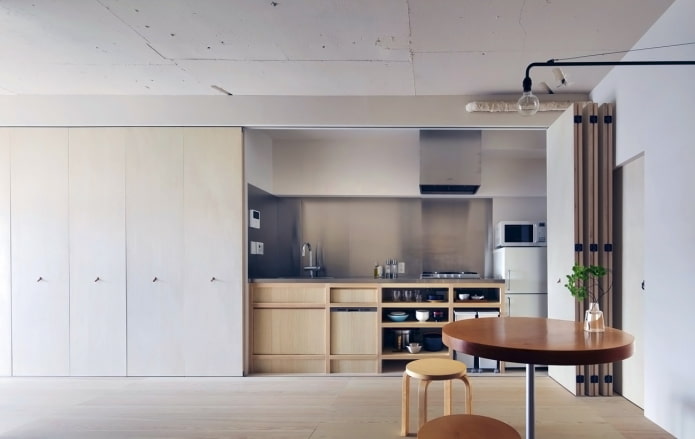
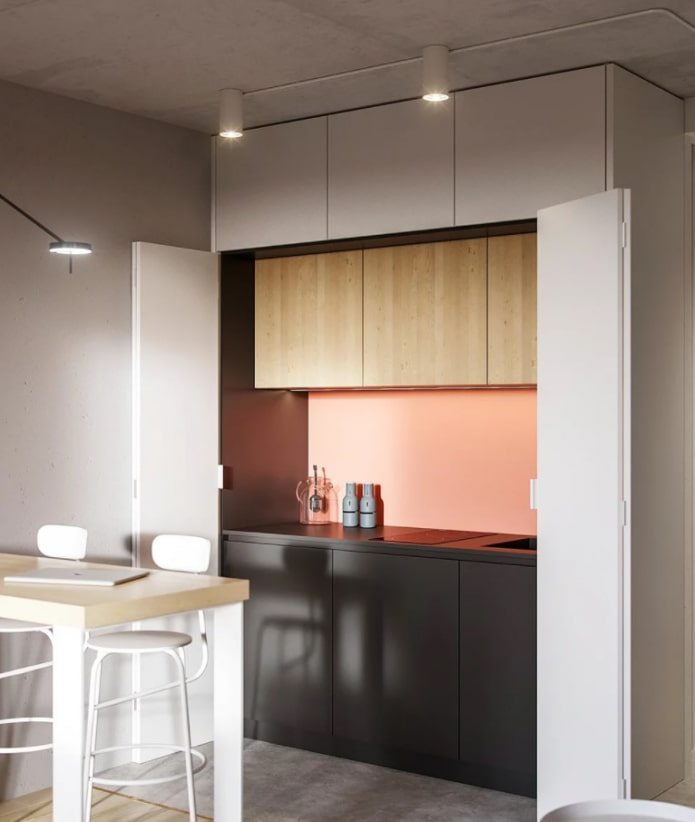
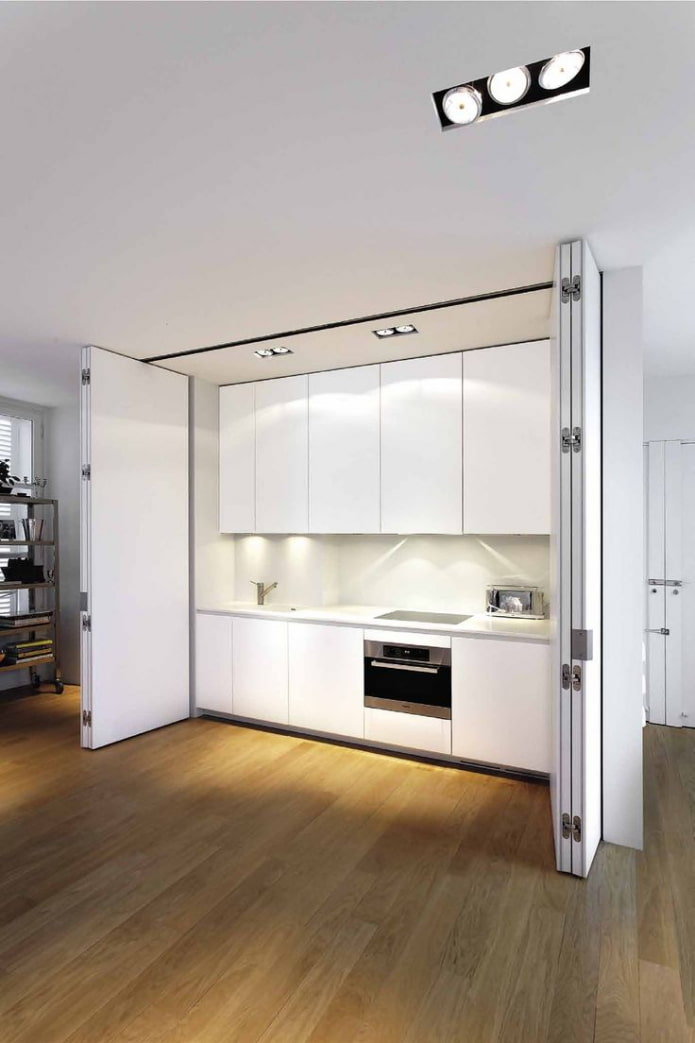
The bright fifth option in the open state contrasts with the surrounding environment. The black bottom row of cabinets and the salmon apron set the dynamics of the interior. Three tiers of cabinets are thought out for storage, a small hob and a convenient sink will help you cook.
Separately, you should pay attention to the light: the hidden system also requires bright lighting above the work area. In this case, the lighting is implemented using ceiling lights from the outside.
In the sixth photo, you can see that the general lighting fixtures are already hidden inside, and the countertop is additionally illuminated using bulbs under the wall cabinets.
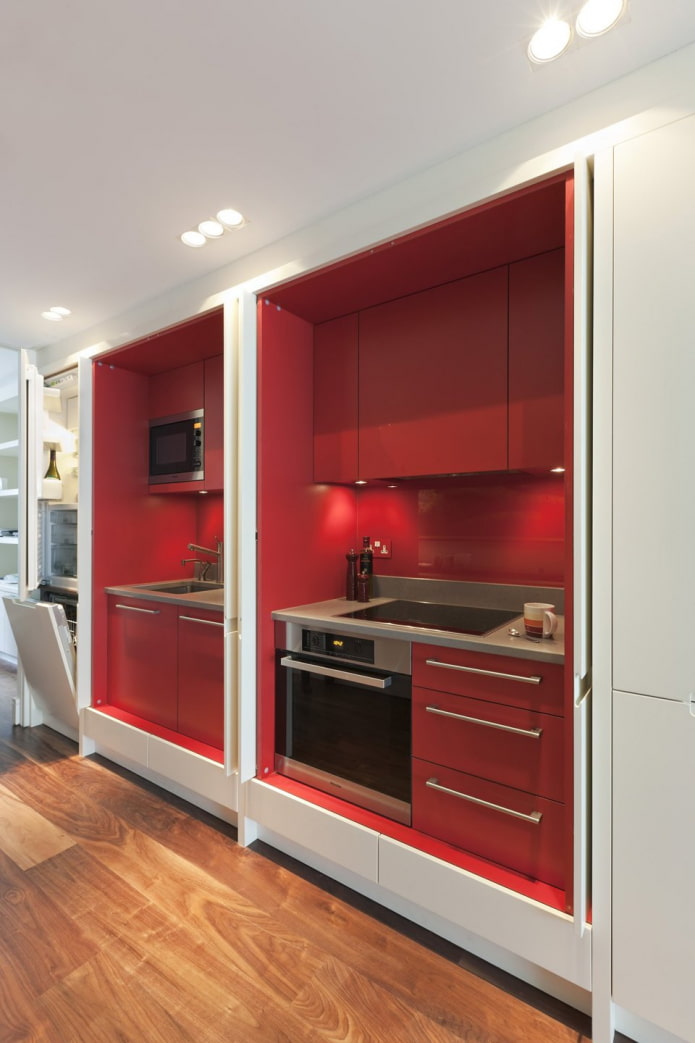
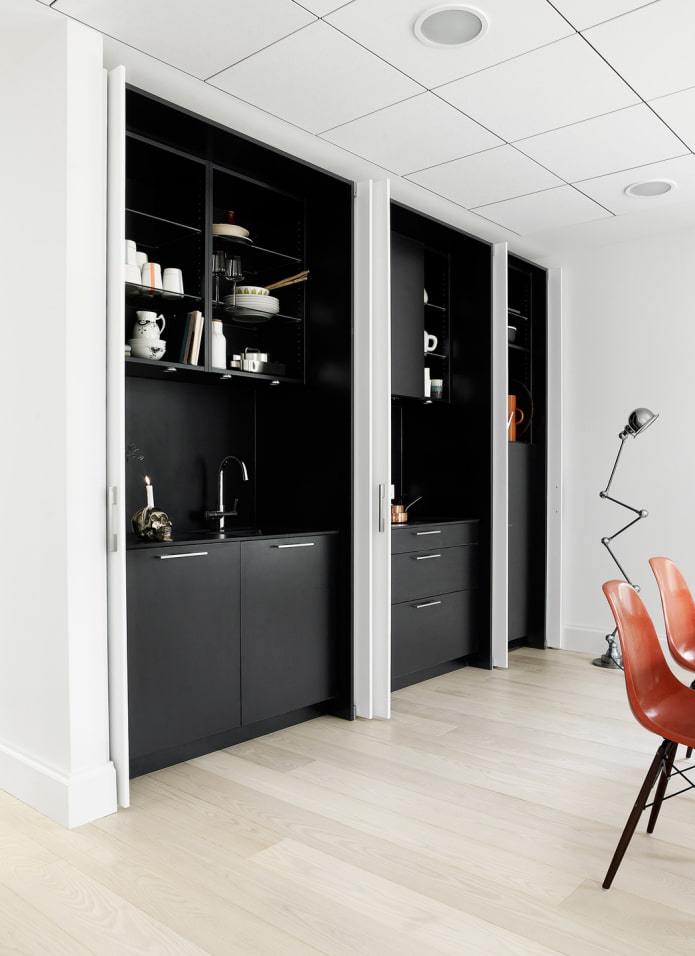
Professional designers of invisible kitchens like to repeat: your guests should not guess where exactly hidden kitchen. If you managed to achieve this effect, then you did everything right!
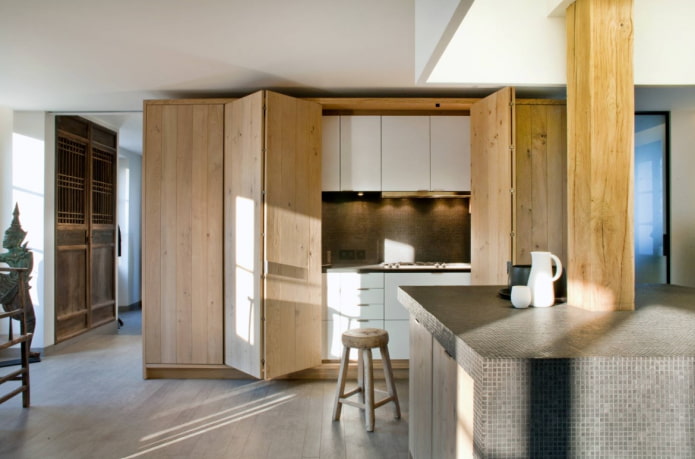

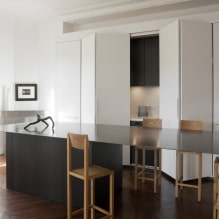

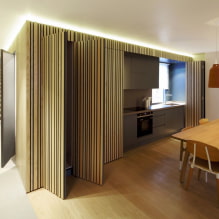
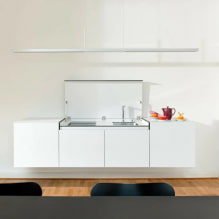
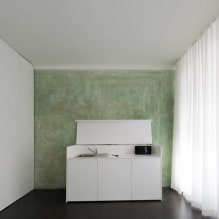
Now reading:
- Fireplaces and TVs in the Living Room: 50+ Interior Photos and Stylish Ideas
- Linoleum in the interior: more than 70 photos, tips on selection and design.
- Beige bedrooms: 55 photos and design ideas for inspiration.
- Laminate or parquet: how to choose the best and what are their differences?
- Kitchen with a balcony: 55 examples of design and real interiors.